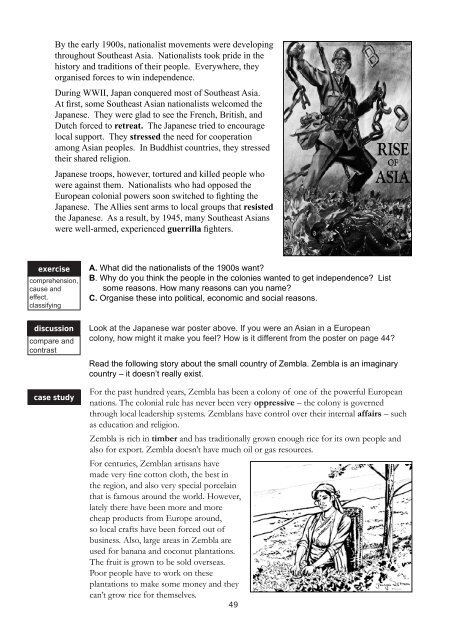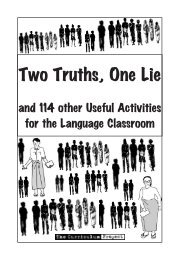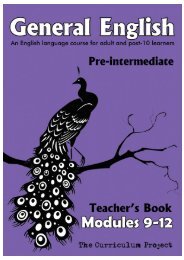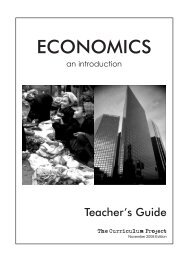Student's Book â Dec 2009 (5.9mb) - The Curriculum Project
Student's Book â Dec 2009 (5.9mb) - The Curriculum Project
Student's Book â Dec 2009 (5.9mb) - The Curriculum Project
Create successful ePaper yourself
Turn your PDF publications into a flip-book with our unique Google optimized e-Paper software.
By the early 1900s, nationalist movements were developingthroughout Southeast Asia. Nationalists took pride in thehistory and traditions of their people. Everywhere, theyorganised forces to win independence.During WWII, Japan conquered most of Southeast Asia.At first, some Southeast Asian nationalists welcomed theJapanese. <strong>The</strong>y were glad to see the French, British, andDutch forced to retreat. <strong>The</strong> Japanese tried to encouragelocal support. <strong>The</strong>y stressed the need for cooperationamong Asian peoples. In Buddhist countries, they stressedtheir shared religion.Japanese troops, however, tortured and killed people whowere against them. Nationalists who had opposed theEuropean colonial powers soon switched to fighting theJapanese. <strong>The</strong> Allies sent arms to local groups that resistedthe Japanese. As a result, by 1945, many Southeast Asianswere well-armed, experienced guerrilla fighters.exercisecomprehension,cause andeffect,classifyingdiscussioncompare andcontrastcase studyA. What did the nationalists of the 1900s want?B. Why do you think the people in the colonies wanted to get independence? Listsome reasons. How many reasons can you name?C. Organise these into political, economic and social reasons.Look at the Japanese war poster above. If you were an Asian in a Europeancolony, how might it make you feel? How is it different from the poster on page 44?Read the following story about the small country of Zembla. Zembla is an imaginarycountry – it doesn’t really exist.For the past hundred years, Zembla has been a colony of one of the powerful Europeannations. <strong>The</strong> colonial rule has never been very oppressive – the colony is governedthrough local leadership systems. Zemblans have control over their internal affairs – suchas education and religion.Zembla is rich in timber and has traditionally grown enough rice for its own people andalso for export. Zembla doesn’t have much oil or gas resources.For centuries, Zemblan artisans havemade very fine cotton cloth, the best inthe region, and also very special porcelainthat is famous around the world. However,lately there have been more and morecheap products from Europe around,so local crafts have been forced out ofbusiness. Also, large areas in Zembla areused for banana and coconut plantations.<strong>The</strong> fruit is grown to be sold overseas.Poor people have to work on theseplantations to make some money and theycan’t grow rice for themselves.49













![[Eng] Nov 2012 DRAFT - The Curriculum Project](https://img.yumpu.com/45590859/1/184x260/eng-nov-2012-draft-the-curriculum-project.jpg?quality=85)


